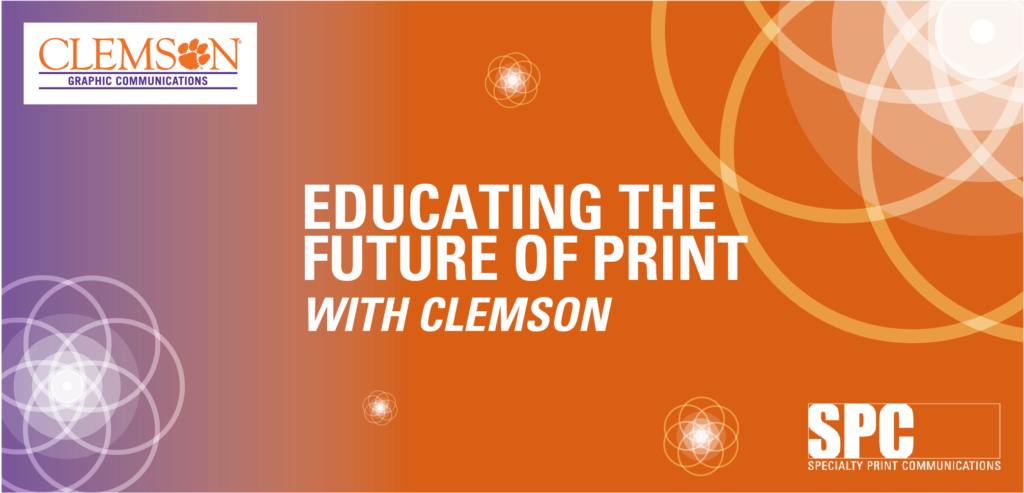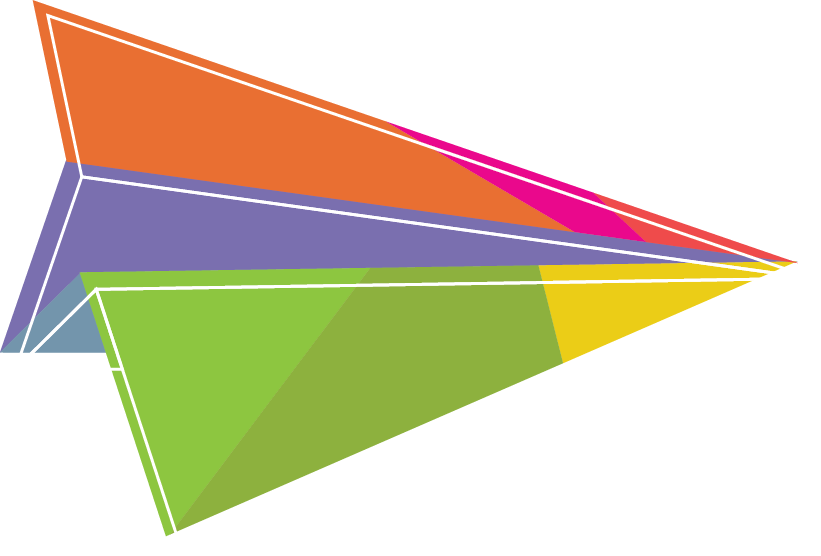
The Clemson Graphic Communications program has proven to produce knowledgeable, experienced professionals ready for the work place after graduation. SPC is always looking for ways to grow the future of print and is committed to the success of young professionals in the industry. In an effort to fill the gaps between college print programs and the industry itself, we asked a series of questions to Clemson staff and alumni. Associate Professor for the Department of Graphic Communications, Doctor Eric Weisenmiller, along with alumni and current SPC employees, Kiki Heron, 2016 graduate, and Audrey Prochaska, 2021 graduate provide their insight below:
How do college print programs help promote the industry?
Eric W: College Graphic Communications programs are promoting the industry by building upon fundamental knowledge of the production practices taught in the core curriculum. Awareness about the industry is key, I believe, as many students are not necessarily aware of the industry’s scope. Some ways that I have tried to promote awareness of the industry to our students is through site visits, or “field trips”, where students are exposed to the industry firsthand. Many of the major manufacturers of graphic systems and equipment are very welcoming. They are commonly receptive to plant tours and experiences that involve students in their demonstration and/or experience centers. In addition, industry conference, forum, and tradeshow attendance is very effective in involving our students with the industry. To have students network with professional attendees at these events has been a very effective way to promote the possibilities that await students in the industry.
What can the print industry do more of to help print programs succeed?
EW: Three things come to mind in regards to this:
- Having industry provide meaningful internship opportunities for our students
- Keeping open doors to welcome our students for site visits, sponsored attendance, mentorship relationships, and collaborative projects
- Providing a bit of material support to allow for hands-on experiences to continue to take place on campus for student projects.
What are the biggest challenges facing college print programs?
EW: Making students aware of the distinctive quality of the printing industry. Often students are attracted to the graphic design, brand management, digital content creation, and marketing aspects of our curriculum and are led astray because they have doubts about the viability of a career path in print and how it can tie in to those mentioned areas. I also see challenges in retaining the mode of education in which students are able to have the opportunity to fully engage in hands-on problem-solving activities and projects through on-campus laboratory settings. These lab environments are extremely valuable in cultivating a mentality of practical problem solving. The problem is that they require much support–both from the host school and through industry partnerships.
How did your print program prepare you for the professional world?
KIKI: The Graphic Communications program at Clemson University is a very well-rounded program that taught me what the world of Print has to offer and what a career in Print looks like.
GC teaches students what opportunities the Print industry has to offer by providing a foundational understanding of all aspects of print. The curriculum covers all types of print—flexography, lithography, digital, screen, and gravure—as they relate to a wide range of applications—packaging, direct mail, labels, publication, large format, and fine art. Students gain a working knowledge of the entire process from file creation, to paper and ink, to printing, to finishing—opening the door to any print or print-adjacent career path out there.
The GC program extends outside of the classroom and lab to demonstrate to students what a career in print looks like. Many classes offer students tours of companies’ print facilities and the degree requirements include two internships to give students real world experience.
AUDREY: The Clemson University Graphic Communications program prepared me for the professional world by giving me a hands-on approach to all aspects of an industry. I gained experience and knowledge across many different printing processes, marketing techniques, design and branding skills, and overall business processes. This wide range of knowledge allowed me to truly understand the ins and outs of a professional industry and see hands-on each aspect of it.
What makes a company stand out to you as a student?
KIKI: The Print industry is constantly evolving to harness new technology and to meet new demands. As a student, a company that was eager to innovate and evolve stood out most to me for two reasons. First, it would offer me a chance to continuously learn beyond school. Second, it indicates that a company is committed to continuous improvement, which extends into many aspects of a work environment.
As a student, it is also important to understand the culture of the company and whether that’s a good fit for you personally. It can be very helpful to talk to other students who have done their internship with the prospective company, recent graduates who now work at the prospective company, or current employees in your role that you can speak with during the interview process.
AUDREY: As a student, you are looking for a company that you have the ability to grow with and can equally benefit from you as you benefit from them. You look for a company that has a good standing in the industry and is up to date with technology and trends. A company that is innovative, ahead of the game, and unique in the market really stands out to me, as well as one with a good culture and happy employees.
What’s some advice you wish you would have received as a student?
KIKI: One aspect of the Print Industry that I don’t think your classes teach you is that Print is a 24/7 industry. This means that production may be running outside of your usual work hours and you may be expected to respond to any questions or problems that arise in that time. Now that everyone carries a computer and cell phone with them at all times, you need to develop the skill of setting boundaries between your personal life and your work, otherwise it is easy to feel overwhelmed and stressed out because you’re always “on the clock”.
AUDREY: Take every opportunity put in front of you. Your time is short and you don’t want to miss out on experiences. You learn a lot in classes but you learn much more outside the classroom.
SPC prides itself on providing an environment for growth in education and experience within the print industry. Proper and consistent communication are important between the educational and professional worlds of print to allow for smooth transitions. If you have questions or are interested in SPC’s internship and apprenticeship opportunities, please contact Ryan LeFebvre at ryanl@specialtyprintcomm.com.










